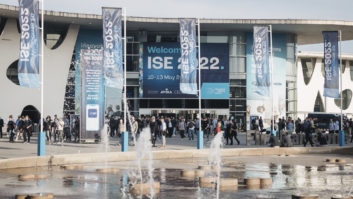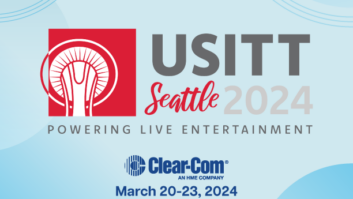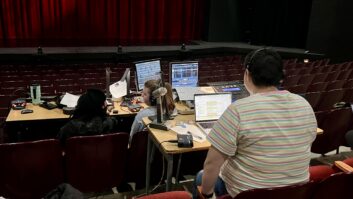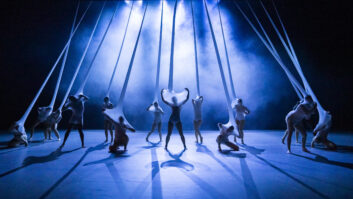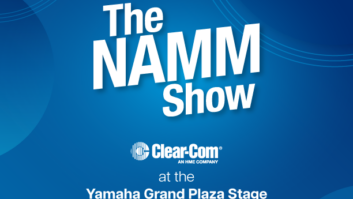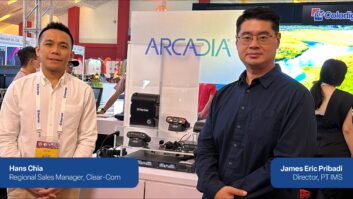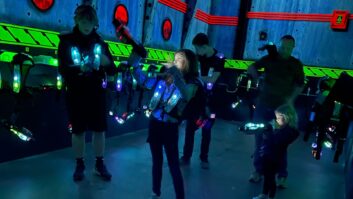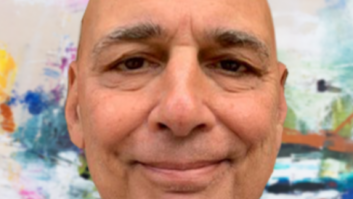In Europe about 71 million people aged 18 to 80 have a hearing loss of greater than 25dB, the definition of hearing impairment recognised by the World Health Organization. In the Netherlands alone, 10% of the population is hearing impaired, with 75,000 hearing aids supplied annually. Ask users about how well society is geared towards meeting their needs and it quickly becomes apparent that confidence in the technology aimed at helping them is fairly low.
The UK’s Disability Discrimination Act (DDA) 2005 states that shops and other everyday service providers must make “reasonable adjustments” to accommodate disabled customers. However, a recent report on induction loops carried out by the UK’s Royal National Institute for Deaf People (RNID), working alongside a major transport provider, found that only 3% of ticket purchase and assistance windows gave an acceptable experience, and 20% did not work.
Legislation aimed at helping the hard of hearing varies across Europe. Julian Pieters, managing director of induction-loop manufacturer Ampetronic, points out the discrepancies he sees. “There is a principle in European legislation of reasonable adjustment. This means that there is some interpretation to be had about what is reasonable, and it doesn’t mandate loop systems. It can say, for example, that in an auditorium for more than 100 people, they must provide coverage for 80% of them. Whereas in the UK you must provide accessibility wherever it’s reasonable to do so, which could be nowhere.”
Personal amplifiers
For people who require a volume increase to achieve the same level of understanding as people with normal hearing, assisted listening systems (ALS) are part of their solution.
In essence these are amplifiers that bring sound directly into the ear and have at least three components: a microphone, a transmission technology, and a device for receiving the signal and bringing the sound to the ear. They aim to separate the sounds, particularly speech, from background noise.
However, disability access is only one part of the ALS market. In the past, little consideration was given to offering assistance to those without a prescribed hearing aid who simply wanted an enhanced experience.
However, any environment in which supplementary audio is required – such as a factory tour, a museum, a theatre or a school – can be a candidate for ALS. In countries such as Spain, however, access legislation is written in such a way as to offer equal opportunity to both the hard of hearing and those without supplementary listening requirements.
Trio of technologies
Assisted listening devices (ALDs) are based on three technologies: induction loops, radio and infrared, each of which has its own merits. The main advantage of an induction loop is that a hearing aid user has no need for additional receiving equipment. System owners do not have to worry about headsets or charging batteries. Loop systems are not suitable for very large seating areas such as stadiums or when multiple simultaneous channels are needed.
Ampetronic has the broadest range of induction loop solutions on the market, with everything from large-area coverage systems to niche applications. Pieters says: “Loop systems can be tricky, although they’re not complex, and it is easy to get them wrong. It’s not just a question of selecting an amplifier and speakers and slapping them in. You have to be conscious of the environment you’re installing the system into.
“For example, if there’s a large amount of metal in a structure, this will affect the loop. There are solutions to everything, but you can fall into traps and it’s necessary to know what you’re doing. The emphasis for us is to make sure that the specification is right, so integrators are forced to do the right job.”
FM radio-based systems are commonly used in educational settings, guided tours and houses of worship, offering mobility and flexibility when used with body-worn transmitters. They can be cost effective, especially in large-scale systems. The downside is that FM signals are not generally constrained by walls or buildings, so they are unsuitable for applications that require privacy, such as corporate or judicial work. FM can also be susceptible to outside interference from other users of the radio spectrum, such as FM antennas and mobile phones.
FM and infrared manufacturer Williams Sound has been helping people hear for more than 33 years. A high-profile use of the company’s technology came recently at the InfoComm09 Technologies for Worship Pavilion. Attendees learned how to increase the outreach of their churches by incorporating the latest in audio/video, lighting and display technology.
Williams Sound played a key role in this education process by providing an array of FM transmitters and receivers designed to overcome listening difficulties during the audio workshops in the pavilion.
Paul Ingebrigtsen, president and CEO of Williams Sound, comments on a recent development that is helping to drive business: “There is an expansion in the use of hearing assistance systems to provide audio description services for blind people in cinema and live-theatre markets. Providing this service requires the use of multichannel infrared or FM technology. The market for large-area hearing assistance is fairly well established in the UK, but is relatively new for the rest of Europe.”
Market developments
Despite the drawbacks, FM still holds a big chunk of the ALS market, and there is a large number of new products coming out. Sennheiser’s HDE 2020-D is a digital radio solution in the 863-865MHz licence-free band. Up to six frequencies are possible in tour-guide mode, or up to eight in fixed mode.
John Willett, Sennheiser’s expert on assistive listening systems, comments on the product: “Currently we have a choice of three transmitters (pocket, hand-held and fixed-mains powered) and a stethoset receiver. In a short time we will add a receiver with a jack socket that can be used with a neck induction loop, headphones, earpiece, or fixed connection to a hearing aid. This sort of system is ideal for listed buildings where you are not allowed to alter the fabric of the building to install an induction loop or infrared radiators.”
The relative newcomer to the world of ALS is infrared, which is a light-based technology. The advantage is that it guarantees privacy because light does not pass through walls, making it useful for situations such as court proceedings that require confidentiality. It is also suited to installations where many systems are used in adjacent rooms without interference.
One disadvantage is that older systems are susceptible to interference from devices such as fluorescent lighting, and while this has been overcome with the switch to 2.2MHz technology and beyond, plasma screens and direct sunlight can still kill off some IR systems.
Looking at uses of IR, the education market has adopted ALS to enhance teaching. A good example of this is Soundfield – an integrated approach to the implementation of PA systems in the classroom. “Under quiet classroom conditions, most teachers have enough natural volume in their voice to communicate effectively with a class,” says Chris Edwards of CIE Group, which markets Soundfield solutions in the UK. “But any number of acoustic factors can have a significant effect.”
Soundfield is designed to raise the teacher’s voice above these, giving even voice coverage throughout the room without shouting. Some studies show that students learn 30% more when classroom amplification systems are used.
So how easy are FM and infrared ALS installs? Cory Schaeffer, Listen Technologies’ VP of sales and marketing, comments on how the varying technologies are understood: “Our integrators are generally up to speed on the deployment of these technologies and their strengths and weaknesses in each application. However, we do spend a great deal of time developing tools to educate our integrators. That being said, our new ListenPoint system was designed to be extremely easy to install. Most installations can be completed in less than two hours.”
For the hard of hearing, being served at a bank, or railway station ticket booth can be difficult. The same can be said for those with able hearing, as background noise can serve as a constant distraction.
Swiss PA/VA and intercom manufacturer Ateïs makes a counter intercom range called the Magellan that provides hearing assistance both for open desk environments requiring a loop install and for through-glass applications such as ticket windows. Used throughout the Swiss SNCF station network and in ski-lift pass environments, it features DSP technologies to suppress feedback and reduce unwanted background noise. An installer using a laptop, which is then locked so that the end user cannot tamper with it, can set up the system.
However, Neil Voce, sales director at Ateïs UK, comments: “The peak of sales of this type of product was, as with all DDA-compliance installs, a couple of years ago.”
What then of the future? It’s clear that ALS has its part to play in making life easier for everyone, not only hearing aid users, but also those with a slight hearing loss. A lot of these people are concerned about being perceived as disabled. Consequently they don’t wear hearing aids, but struggle through. Because of the attention now being paid to ALS it is these intermediate people who will possibly benefit most from the technology.
For the more seriously hard of hearing, in a lot of European countries it is left to individual pressure groups to try to move things forward. RNID members in the UK send letters to companies that aren’t providing adequate access.
In the Netherlands, Nederlandse Vereniging voor Slechthorenden (NVVS) is a highly active organisation whose mission is to ensure that those with any kind of hearing impairment are able to play a part in society. Some 3,000 different pieces of equipment have been certified by the NVVS since 1986, and 250 inspections of loop installations are carried out per year by between 10 and 50 inspectors. The numbers may be small, but their actions are highly significant – and an indication as to how tough things can be for the hard of hearing.
